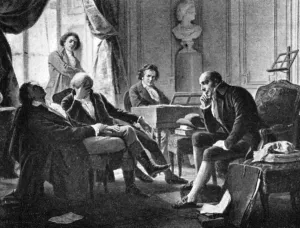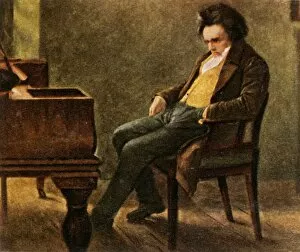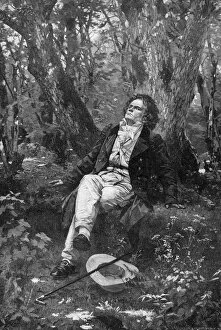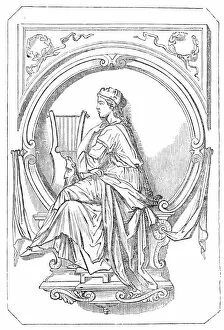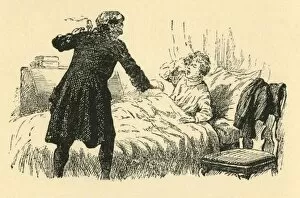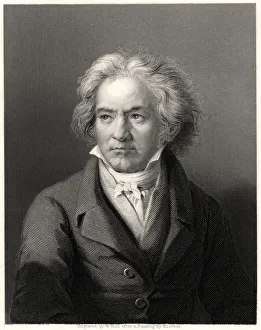Ludwig Van Collection
"Ludwig van Beethoven: A Musical Genius Immortalized in Art and Legacy" In 1845, the world paid homage to Ludwig van Beethoven
All Professionally Made to Order for Quick Shipping
"Ludwig van Beethoven: A Musical Genius Immortalized in Art and Legacy" In 1845, the world paid homage to Ludwig van Beethoven, a musical genius whose compositions continue to captivate hearts and minds. The Inauguration of the Statue of Beethoven at Bonn stands as a testament to his enduring influence on music. Created by an unknown artist, this magnificent sculpture immortalizes the man behind masterpieces that have stood the test of time. Beethoven's impact is felt through various artistic expressions. Smyth's portrait from 1845 captures his intense gaze, reflecting the depth and passion within his soul. Tragic Music, created by an anonymous artist during the same year, evokes emotions that only Beethoven could convey through his haunting melodies. Sacred Music also emerged from Beethoven's creative wellspring in 1845. Though its creator remains unknown, this piece undoubtedly reflects his spiritual journey and profound connection with divinity. It serves as a reminder that music can transcend earthly boundaries. The Birthplace of Beethoven transports us back to where it all began - Bonn - showcasing an image shrouded in mystery but brimming with historical significance. This birthplace nurtured a prodigious talent destined for greatness. Another statue dedicated to him further solidifies his place among musical legends. Crafted by an enigmatic artist in 1845, it symbolizes not only admiration for Beethoven but also recognition of his indelible mark on classical music. Symphony and Fantasia are two more works from this remarkable period when creativity flowed effortlessly from Beethoven's fingertips onto paper or into orchestral arrangements—both creations attributed to unknown artists who were inspired by their subject’s brilliance. Moving forward in time to 1907 brings us face-to-face with Schubert fleeing from a room—an intriguing scene captured by an unidentified observer. What transpired? We can only imagine how these two musical giants interacted, their shared love for music fueling a creative rivalry.

